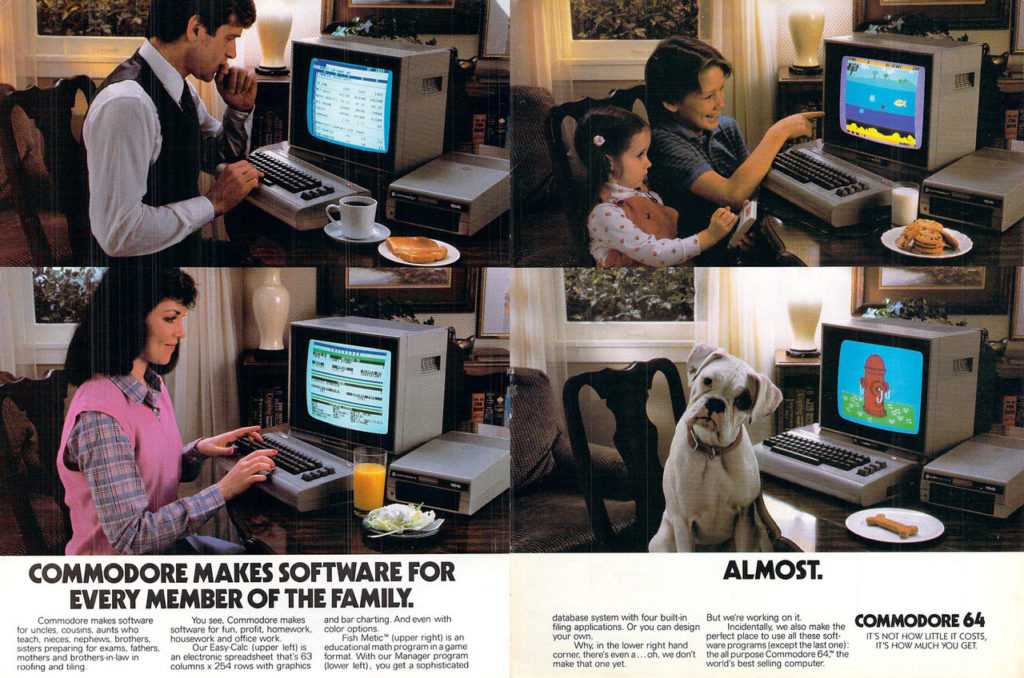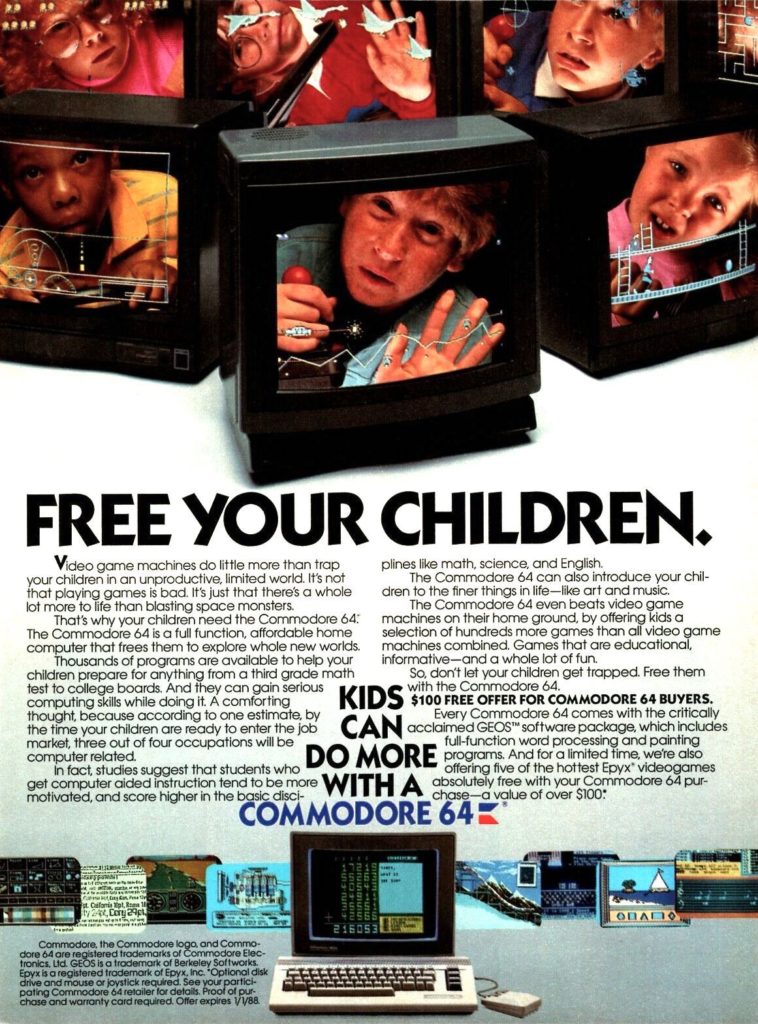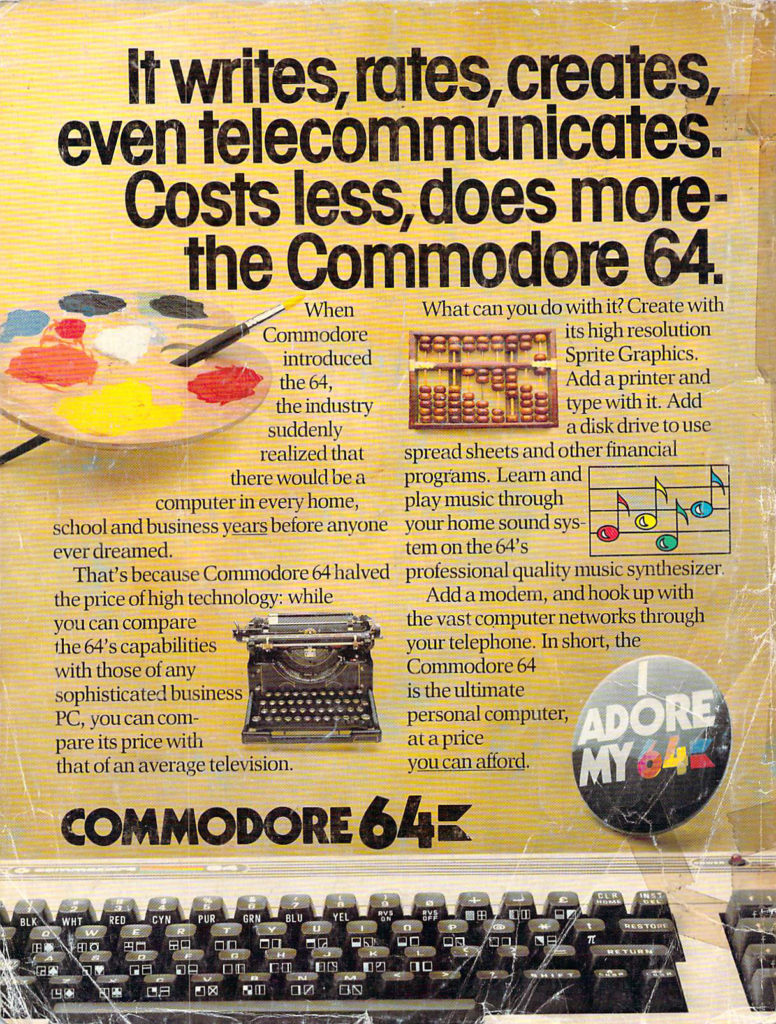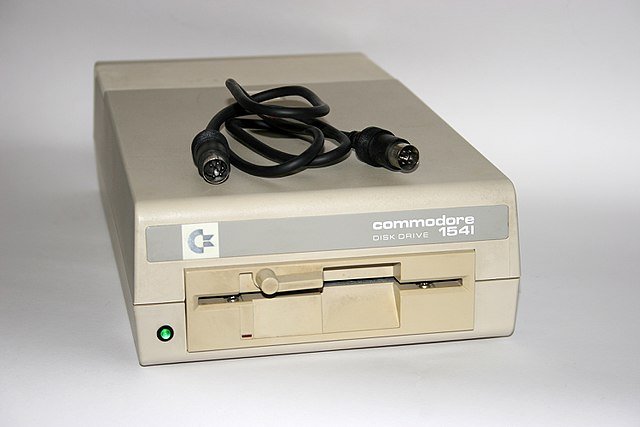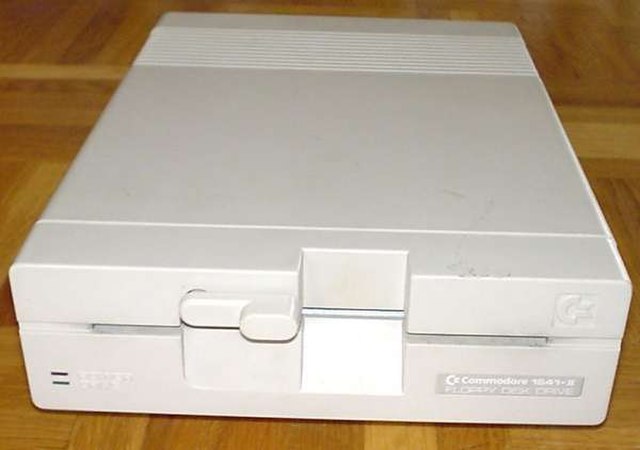Everybody has their favorite game system but mine wasn’t, strictly speaking, a video game console at all. It was a computer. One that just happened to be great for gaming too. It was (and still is) the Commodore 64.
The Commodore 64 wasn’t Commodore’s first computer. It released several other quite successful computers before that. While Apple often seems to get the credit for producing the first personal computer, that is not true at all. The Commodore PET beat it to market by 3 months having been released in January 1977. The Apple II followed in April, the TRS-80 in August and the the Atari 800 two years later. Commodore would follow the PET line up with the VIC-20, the first personal computer to sell 1 million units and then in 1983 came the most successful personal computer in history, the Commodore 64.
By some accounts, the Commodore 64 sold nearly 20 million units and it is in the Guinness Book of World Records as the best selling single model PC of all time. It featured an 8-bit, 6510 CPU (a 6502 derivative) running at 1 MHz and a whopping 64KB of RAM. In the very beginning, a separate cassette drive was the most popular form of storage. In Europe, the cassette would be the dominant form of storage for the Commodore 64 throughout its life into the mid 1990s. In North America, a 5.25″ Disk Drive, the 1541, quickly replaced the cassette as the dominant form of storage. However, the disk drive cost as much or even a little more than the computer itself.
While the Commodore 64 was released in 1982, I didn’t have mine until much later at the end of 1986. My first exposure to the Commodore 64 was from a neighbor. At the time we moved to the house we lived in at the time, our neighbors two houses down, had just obtained a second hand Commodore 64 (this would have been in mid 1985). Fortunately they had a kid my age and we spent many, many hours playing games like Raid On Bungeling Bay, Winter Games, Summer Games, Kik Start, Spy Hunter, Spelunker, California Games, Gauntlet, Ghostbusters, Beach Head, Impossible Mission, Pole Position, Commando, Raid Over Moscow, Zaxxon and others. I didn’t realize it at the time, but their Commodore 64 had come with a box of disks filled with pirated games. At first, we only knew how to load the first game on a disk (LOAD”*”,8,1). At first, we didn’t even know there were other games on some of the disks. Then we learned LOAD”$”,8 and LIST. For those that don’t know, that would display a directory. That discovery opened up a whole new world. It was like finding a hidden pirate treasure (almost literally) as there were often many games on a disk. I attribute that moment, that sense of discovery, as being largely responsible for what led me to a career in computers.
So it wasn’t too terribly long before a Commodore 64 was number one on my list for Christmas. The particular model that I received was the Commodore 64C which featured some cosmetic (to match the new Commodore 128) and power improvements but was functionally the same as the original model. I believe I got the computer itself in 1986 but it would be another year before I got the disk drive and a year after that before I got a monitor (before that, I used a small color TV). I would buy more games over the next few years, including Test Drive, Ace of Aces, Pool of Radiance, Echelon and a handful of others. The Commodore 64 was my only computer until I went to college in 1993 at which time I bought a 486 DX2/66 with a whopping 16 MB of RAM. But I still have that Commodore 64.
The Ads shown above are from 1984 and 1988. The second ad (from 1988) shows the Commodore 64C.
